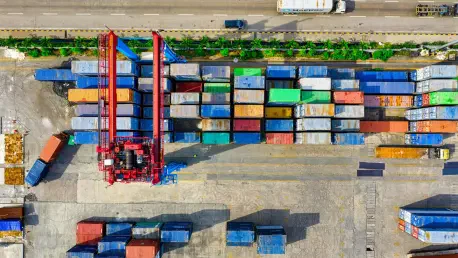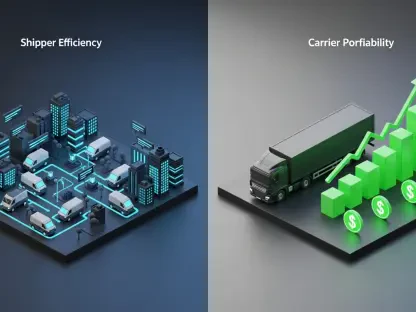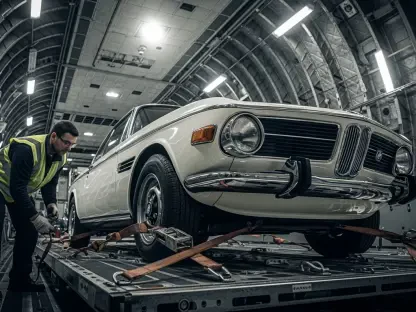In the heart of the global automotive industry, a silent crisis unfolds, bleeding the sector of a staggering $13 billion annually due to supply chain disruptions, with assembly lines grinding to a halt, critical components stranded at congested ports, and frustrated customers waiting months for vehicles. This isn’t a hypothetical scenario but a harsh reality for an industry at a pivotal moment, grappling with technological shifts and mounting global challenges. How did such a vital sector become so vulnerable, and what does this mean for the future of mobility?
The importance of this issue cannot be overstated. With the automotive logistics market valued at $295 billion, that $13 billion loss represents nearly 5% of its total worth—a significant hit to profitability and growth. As the industry races toward electrification and software-defined vehicles, supply chain stability has emerged as a make-or-break factor for manufacturers and consumers alike. This story uncovers the root causes, the human and economic toll, and the urgent strategies needed to steer through this turbulent landscape.
Unraveling the Financial Hemorrhage
The automotive sector stands as a colossus of precision, yet it’s crumbling under the weight of relentless disruptions. Geopolitical tensions, trade volatility, and unexpected crises like port bottlenecks and cyberattacks have exposed deep vulnerabilities. These issues strike at the core of an industry that thrives on timing, where even a single delayed shipment can stall production and erode profits. The scale of the problem is staggering, with annual losses mounting to a figure that demands immediate attention from stakeholders across the board.
Beyond the numbers, the ripple effects touch every corner of the market. Manufacturers face not just financial setbacks but also strained relationships with partners and customers. As vehicles grow more complex with advanced technology, the dependency on a seamless flow of components intensifies, making stability more critical than ever. This section sets the stage to explore why these disruptions are so costly and how they challenge the very foundation of a global powerhouse.
A Fragile Network Under Siege
At the backbone of this industry lies a sprawling network of suppliers, manufacturers, and logistics providers, all interconnected in a delicate balance. Valued at nearly $300 billion, the automotive logistics market is a marvel of coordination, but it’s also a house of cards. Forces like international trade disputes and shipping lane detours disrupt this balance, leaving companies scrambling to adapt. The pivot to electric and software-driven vehicles only heightens the stakes, as new components and tighter deadlines add layers of complexity.
The fragility is further compounded by external threats that no one can fully predict. Extreme weather events halt shipments, while digital attacks target critical systems, exposing gaps in security. For an industry built on just-in-time production, these interruptions aren’t mere inconveniences—they’re catastrophic. The economic fallout extends to job delays, missed market opportunities, and a broader impact on consumer confidence in automotive brands.
The Domino Effect of Breakdowns
Digging deeper into the chaos reveals a web of causes and consequences that paint a grim picture. Geopolitical instability affects a staggering 91% of supply chain leaders, disrupting the flow of essential materials across borders. The reliance on just-in-time models, while efficient in theory, leaves little room for error—a minor delay can spiral into weeks of lost production. Data shows that 60% of companies lose over a month of operations during disrupted periods, a statistic that underscores the severity of these breakdowns.
The impact doesn’t stop at factory floors. Customer dissatisfaction spikes, with 80% of firms reporting increased complaints during disruptions. Contracts slip away for 72% of businesses, and 63% suffer lasting damage to their brand reputation. These numbers highlight a truth: supply chain failures are not just logistical hurdles but strategic crises that erode trust and market position, demanding a reevaluation of how the industry operates under pressure.
Perspectives from the Trenches
Industry leaders on the front lines offer sobering insights into this ongoing battle. Beat Simon, a top executive in global logistics, labels the $13 billion yearly loss as a “strategic blind spot” for many companies, pointing to an urgent need for resilience over complacency. His perspective challenges the assumption that the sector is prepared, urging firms to prioritize safeguarding their commercial interests in an unpredictable environment.
Adding to this, David D’Annunzio, a veteran in automotive logistics leadership, speaks to the immense pressures manufacturers face in delivering amidst constant change. He emphasizes the push for innovative solutions to help companies recover faster and maintain reliability. Insights from a survey of 75 automotive logistics executives reinforce these views, revealing a consensus that vulnerabilities must be addressed with strategic foresight and investment to prevent further erosion of stability and trust.
Forging a Path to Stability
Turning challenges into opportunities, actionable strategies emerge to fortify the automotive supply chain against future shocks. Research indicates that integrated logistics investments—covering warehousing, freight, compliance, and sustainability—can slash disruption costs by 20% and accelerate recovery by 60%. These figures offer a compelling case for rethinking traditional approaches, focusing on systems that anticipate and absorb disruptions rather than merely react to them.
For industry leaders, the path forward involves embedding risk management into core operations. Resilience planning becomes a cornerstone, enabling firms to protect profit margins and maintain customer loyalty even in turbulent times. Tailored for automotive stakeholders, these steps provide a blueprint to navigate uncertainty, ensuring that the sector not only survives but thrives in a complex global market. The focus shifts from damage control to proactive strength, a necessary evolution for long-term success.
Reflecting on a Hard-Fought Battle
Looking back, the journey through this $13 billion crisis revealed an industry tested by unseen forces, from geopolitical storms to digital threats. The toll on operations, reputation, and trust stood as a stark reminder of the stakes involved. Each statistic and expert voice echoed the same urgency: vulnerability had become a liability that could no longer be ignored.
The path ahead demanded bold action—investing in integrated logistics, prioritizing resilience, and closing the gap between perceived and actual preparedness. As the automotive sector continued to evolve with electrification and technological advancements, the lessons learned offered a chance to rebuild stronger. The challenge was clear: adapt with strategic foresight or risk falling behind in an unforgiving global race.









